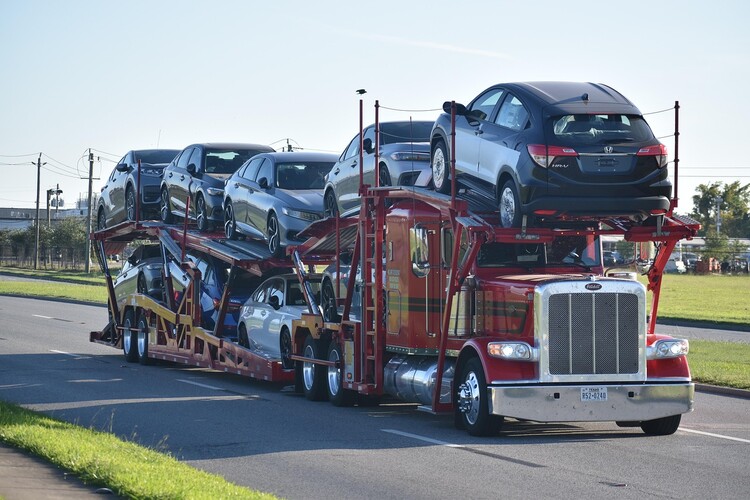5 Key Tips for Moving Cars When You’re Settling into a New Property
Description: |
|
| Relocating to a new home is an exciting yet challenging process, especially if it involves moving your vehicle. You could face unexpected delays, fines, or costly repairs if you overlook important details. Therefore, this article provides five tips to help you avoid common pitfalls and make settling in easier.
Moving a car requires just as much planning as moving household belongings. The first step is deciding whether to drive it or hire a transport service. Driving might be the simplest and most cost-effective option if your new home is a short distance away. However, for long-distance moves, professional vehicle transport can save time and reduce wear and tear on your car. A trailer is a suitable option when transporting multiple vehicles. Nevertheless, before choosing this method, check the towing limits of your vehicle and verify that it’s equipped with the right hitch and braking system. In addition, the trailer you choose matters. Consider an option with unrivaled features, for instance, one that offers a sturdy deck, secure tie-down points, and a low loading angle to accommodate various vehicle types. If you hope to ship your vehicle, research reputable car transport companies well in advance. Look for licensed, insured providers with positive customer reviews. Further, request quotes from multiple companies, compare services, and book your transport early to secure the best rates and availability. Update Your Vehicle Registration and Insurance State laws vary, so check local requirements for updating registration and insurance. Some states require you to transfer registration within a specific timeframe, while others may require an emissions or safety inspection before issuing new plates. Contact your auto insurance provider to notify them of your move. Even if you are staying within the same state, rates and coverage requirements can vary by ZIP code. A different state may require a new policy that meets local minimum coverage laws. Failing to update your insurance and registration on time could result in fines or a lapse in coverage, leaving you unprotected in case of an accident. Prepare Your Car for the Move Whether you’re driving the car yourself or shipping it, a pre-move inspection ensures it’s in good condition for transport. As such, check the oil, brake fluid, coolant, and transmission fluid levels and top them off if needed. Inspect the tires for proper inflation and tread wear, and ensure you have a fully charged battery. If your vehicle is due for maintenance, consider scheduling a service before the move to prevent breakdowns on the road. In addition, remove your belongings and valuables from the car. Most transport companies prohibit them for safety reasons. For instance, loose items inside the cabin could shift during transit, causing damage. Additionally, secure or remove external accessories like roof racks, bike carriers, or spoilers to prevent them from getting lost or damaged. Consider Storage Options If Needed Storage may be a practical solution if you’re not planning to use your car immediately after moving. Temporary storage allows you to settle in without worrying about parking or security concerns. Indoor storage protects your car against weather, theft, and vandalism, making it ideal for classic and high-value cars. Outdoor storage is more affordable but may expose your vehicle to the elements. If you opt for outdoor storage, invest in a high-quality car cover to protect against dust, sun damage, and moisture. Familiarize Yourself with Local Driving Laws and Parking Rules Before you arrive, research local requirements for parking permits, street parking restrictions, and designated zones. Some neighborhoods have limited residential parking, requiring you to apply for a parking permit or secure off-street parking. If you’re moving to a different state or country, familiarize yourself with local driving laws, such as speed limits, right-of-way rules, and unique road signs. In some areas, specific regulations govern winter tires, emissions testing, or toll road usage. Understanding these laws ahead of time can help you avoid fines or compliance issues. Additionally, locate nearby gas stations, repair shops, and emergency services in case of unexpected breakdowns. It will make your transition smoother. Conclusion A well-planned approach to moving your car can prevent unnecessary stress and complications. For instance, securing reliable transport, handling registration updates on time, and preparing your vehicle properly all help ensure a smooth transition. In addition, overlooking key details like parking regulations can lead to unexpected hassles, so taking the time to research your new area is just as important as the move itself. Such preparation goes a long way in avoiding last-minute issues, saving money, and keeping your vehicle in top condition. |
|
Members profile: |
|
| Advertised by: | Fionna Galliard (click here to see full profile) |
| Email: | Email Advertiser |
Ad Details |
|
| Garage Spaces (put 0 if this does not apply) | 0.00 |
| Price: | $0 USD |
| Celebrity Owned | No |
| Country | USA |
| Ad id: | 35464866 |
| Region: | |
| Views: | 3884 |



